Concussion Guidelines
1. BACKGROUND
The South Australian Catholic Secondary School Girls Sport Association (SACSSGSA) adopts the Australian Concussion Guidelines for Youth and Community Sport (Concussion Guidelines) issued by the Australian Institute of Sport (AIS).
The AIS Concussion Guidelines are available via the following link ais.gov.au.
The AIS Concussion Guidelines are a collaboration between the Australian Institute of Sport, Australasian College of Sport & Exercise Physicians, Sports Medicine Australia and Australian Physiotherapy Association.
These SACSSGSA guidelines are of a general nature only. Individual treatment will depend on the facts and circumstances specific to each individual case. These guidelines are not intended as a standard of care and should not be interpreted as such.
These SACSSGSA guidelines will be reviewed regularly by SACSSGSA and will be modified according to new or revised standards on concussion.
It is recommended that participating schools in SACSSGSA sports and competitions develop and maintain a concussion policy/concussion statement, cognisant of the AIS Concussion Guidelines adopted by SACSSGSA.
3. RECOGNISING CONCUSSION
The signs and symptoms are variable, non-specific and may be subtle. Concussion should be suspected when an injury results in a knock to the head or body, that transmits a force to the head.
Visual indicators of concussion include:
- Loss of consciousness or responsiveness
- Lying motionless on the ground/slow to get up
- A dazed, blank or vacant expression
- Appearing unsteady on feet, balance problems or falling over
- Grabbing or clutching of the head
- Impact seizure or convulsion.
The AIS Concussion Guidelines list 20 symptoms when identifying a concussion, and include:
- Headache
- Balance problems
- Nausea or vomiting
- Drowsiness
- Dizziness
- Blurred vision.
4. WHAT TO DO
A player with a suspected concussion should be immediately removed from play.
SACSSGSA requires that its participating schools have a suitably trained first aid representative, that can assist with any concussion/suspected concussion.
Appendix 1 provides a flow chart of the steps to be taken in the event of a concussion/suspected concussion.
In accordance with the AIS Concussion Guidelines, players should not:
- Be left alone initially (at least for 3 hours)
- Worsening symptoms should lead to immediate medical attention
- Be sent home by themselves – they need to be with a responsible adult
- Drink alcohol, use drugs not prescribed by their health care practitioner
- Drive a motor vehicle until cleared to do so by a health care practitioner.
5. MEDICAL ASSESSMENT
A player with concussion or suspected concussion will need to seek medical attention with a health care professional. It is important to note that the AIS Concussion Guidelines identify a number of ‘Red Flags’ that, if apparent, recommends immediate referral to an emergency department – refer Appendix 1.
6. RETURN TO SPORT
The AIS Concussion Guidelines include a graded return to sport framework, that specifies for those under 19 years of age and those without a dedicated health care professional to guide recovery.
The graded return to sport framework requirements are as follows:
6.1 Introduction of light exercise after an initial 24-48 hours of relative rest.
6.2 At least 14 days symptom free (at rest) before return to contact/collision training.
6.3 A player cannot go directly from non-contact activities to competition. They must complete some full contact training to the satisfaction of the health care professional, before returning to competitive contact.
6.4 A minimum of 21 days until the resumption of competitive contact/collision sport.
Appendix 2 details the steps for a graded return to sport, which includes the requirement for a clearance from a health care professional.
Appendix 3 provides several scenario examples with respect to the time periods for return, depending on the length of time a player is symptomatic.
7. RECORDING OF CONCUSSION INCIDENTS
As with all reportable incidents at SACSSGSA competitions, concussions require the relevant school representative to complete the SACSSGSA Incident Report.
The SACSSGSA Incident Report is to be provided to the SACSSGSA Executive Officer, via email at sacssgsa@cesa.catholic.edu.au.

